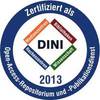In: International journal of health geographics, 13 (2014), Nr. 25. S. 1-13. ISSN 1476-072X
Vorschau |
PDF, Englisch
Download (1MB) | Lizenz:  Creative Commons Namensnennung 3.0 Deutschland Creative Commons Namensnennung 3.0 Deutschland
|
Abstract
Background: Access to skilled attendance at childbirth is crucial to reduce maternal and newborn mortality. Several different measures of geographic access are used concurrently in public health research, with the assumption that sophisticated methods are generally better. Most of the evidence for this assumption comes from methodological comparisons in high-income countries. We compare different measures of travel impedance in a case study in Ghana’s Brong Ahafo region to determine if straight-line distance can be an adequate proxy for access to delivery care in certain low- and middle-income country (LMIC) settings. Methods: We created a geospatial database, mapping population location in both compounds and village centroids, service locations for all health facilities offering delivery care, land-cover and a detailed road network. Six different measures were used to calculate travel impedance to health facilities (straight-line distance, network distance, network travel time and raster travel time, the latter two both mechanized and non-mechanized). The measures were compared using Spearman rank correlation coefficients, absolute differences, and the percentage of the same facilities identified as closest. We used logistic regression with robust standard errors to model the association of the different measures with health facility use for delivery in 9,306 births. Results Non-mechanized measures were highly correlated with each other, and identified the same facilities as closest for approximately 80% of villages. Measures calculated from compounds identified the same closest facility as measures from village centroids for over 85% of births. For 90% of births, the aggregation error from using village centroids instead of compound locations was less than 35 minutes and less than 1.12 km. All non-mechanized measures showed an inverse association with facility use of similar magnitude, an approximately 67% reduction in odds of facility delivery per standard deviation increase in each measure (OR = 0.33). Conclusion: Different data models and population locations produced comparable results in our case study, thus demonstrating that straight-line distance can be reasonably used as a proxy for potential spatial access in certain LMIC settings. The cost of obtaining individually geocoded population location and sophisticated measures of travel impedance should be weighed against the gain in accuracy.
| Dokumententyp: | Artikel |
|---|---|
| Titel der Zeitschrift: | International journal of health geographics |
| Band: | 13 |
| Nummer: | 25 |
| Verlag: | BioMed Central |
| Ort der Veröffentlichung: | London |
| Erstellungsdatum: | 22 Mai 2015 12:51 |
| Erscheinungsjahr: | 2014 |
| ISSN: | 1476-072X |
| Seitenbereich: | S. 1-13 |
| Institute/Einrichtungen: | Fakultät für Chemie und Geowissenschaften > Geographisches Institut
Medizinische Fakultät Heidelberg und Uniklinikum > Heidelberg Institute for Global Health (HIGH) |
| DDC-Sachgruppe: | 610 Medizin |









